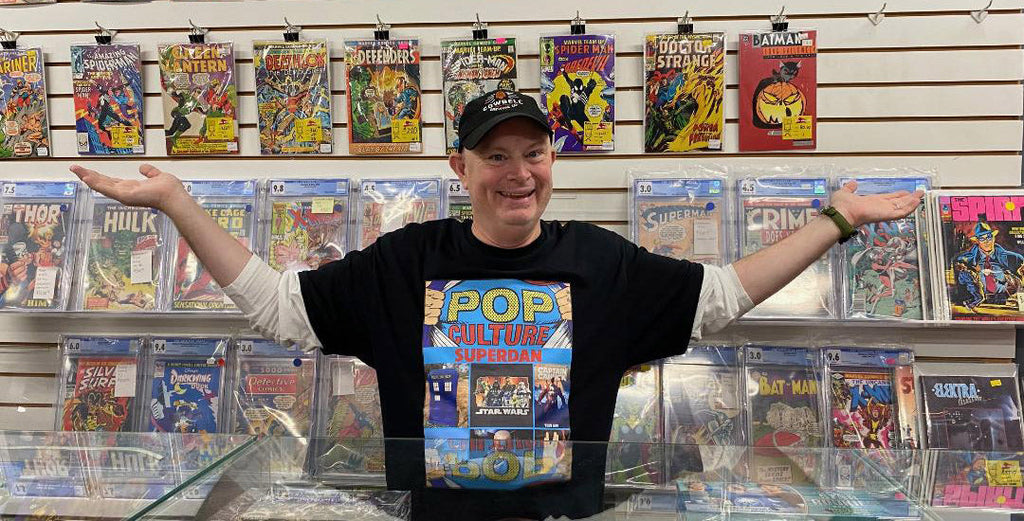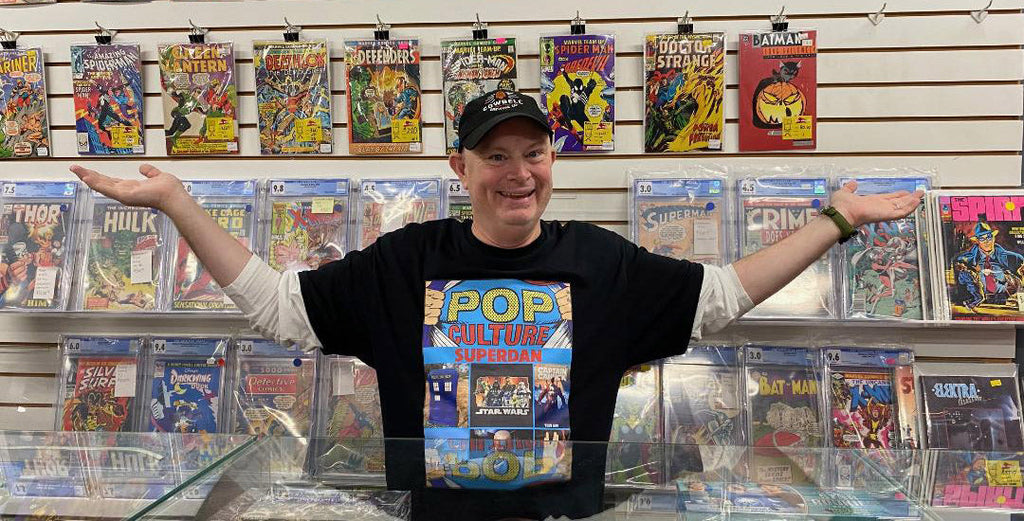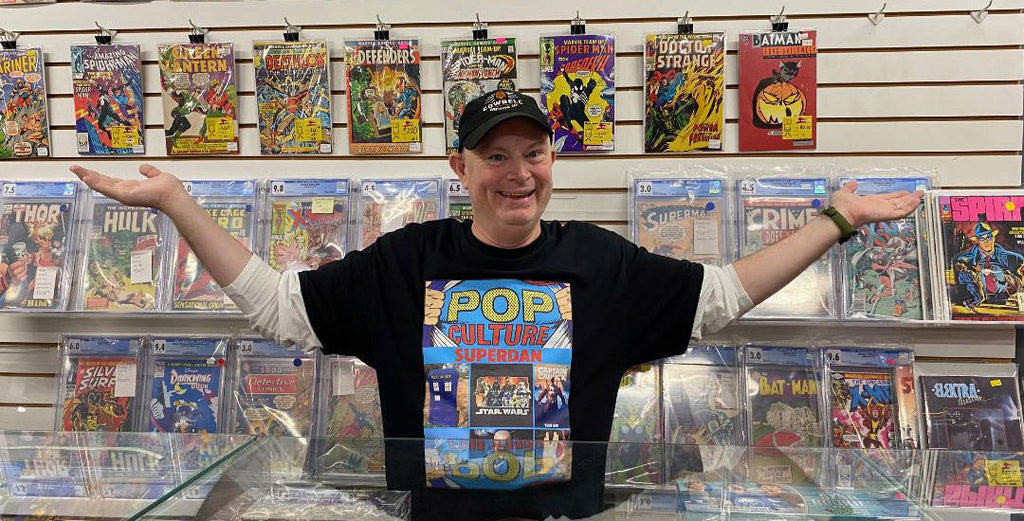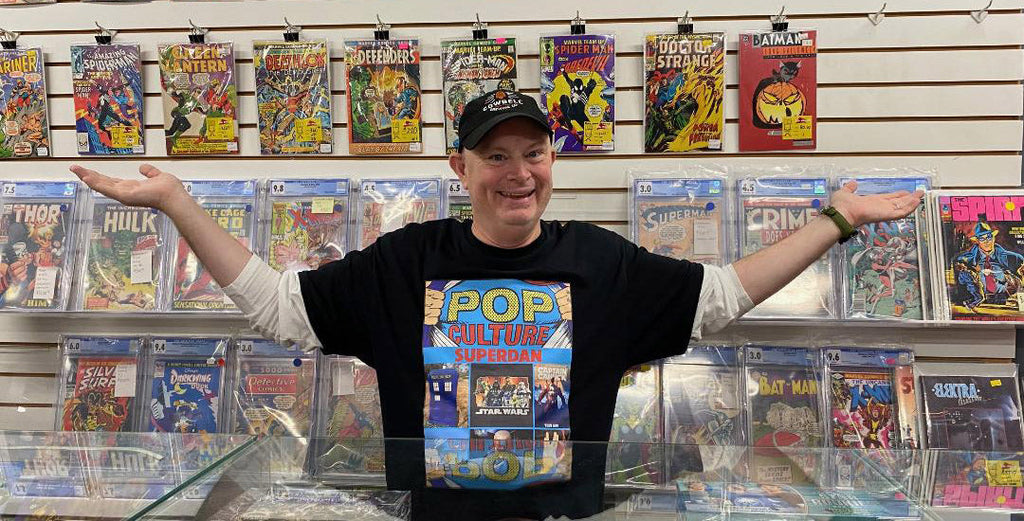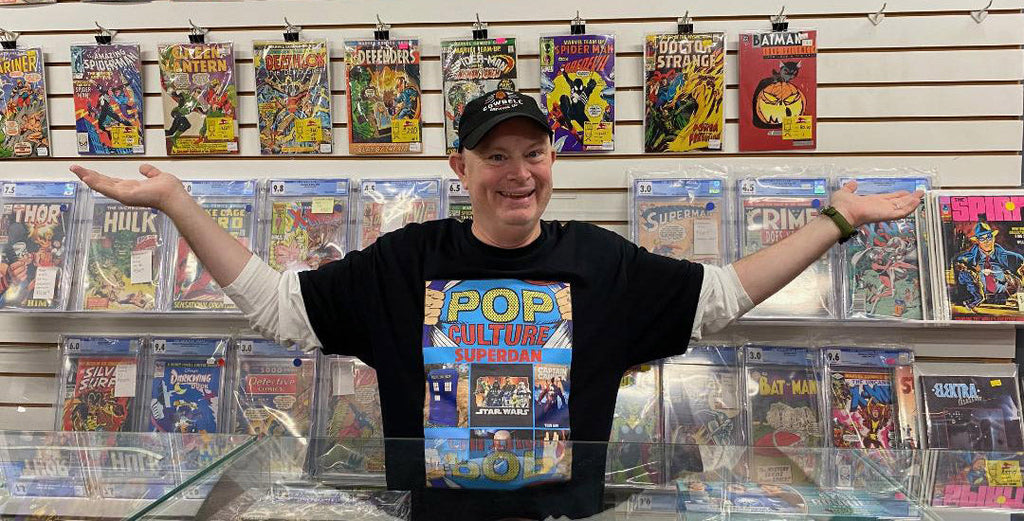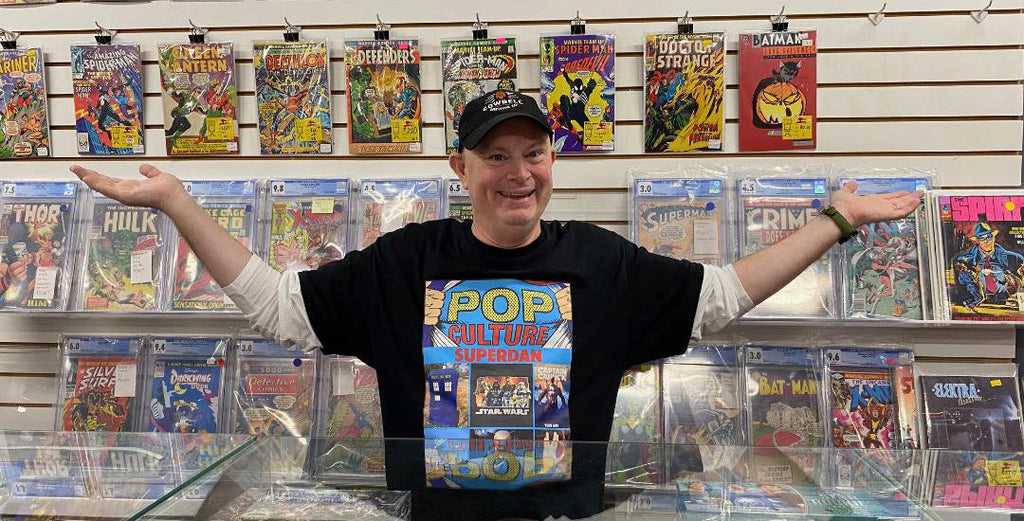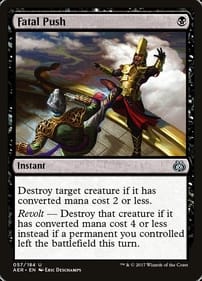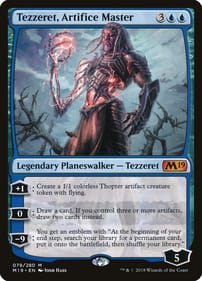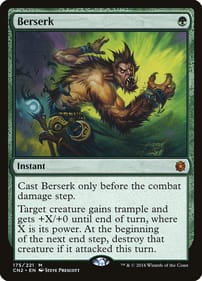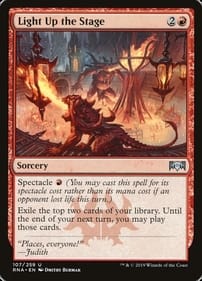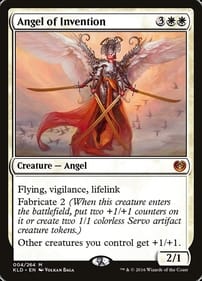Live from London, it’s Saturday Night, mate!
By Dan Brown Although he mostly stays out of the spotlight, there’s one thing we know for sure about Saturday Night Live executive producer Lorne Michaels: He loves to put his name on other TV shows and movies. How else to explain the news last week that Michaels will be the executive producer for a British version of the sketch-comedy program starting next year? Even in our modern global communications environment, it’s going to be hard for Michaels to, you know, actually produce a TV show while living on another continent. Maybe the Canadian funnyman plans to jet over there to launch SNL UK in person. In the past, though, he has never strayed far from the NBC studio at 30 Rockefeller Plaza where the program he founded in 1975 is still broadcast weekly. Despite all of the side projects, including movie adaptations like Coneheads, It’s Pat and MacGruber, SNL is his baby and he’s protective of it. You would be, too, after 50 years on the air. Which doesn’t stop him from attaching his name to everything from last year’s Mean Girls reboot to a Nate Bargatze comedy special to the cult classic series Portlandia. In 1993, Michaels famously did Conan O’Brien a solid when the ginger comedy writer took over Late Night, loaning his on-screen credit to the incipient talk show to help give the untested O’Brien an extra push. Was Michaels actually involved on a nightly basis? Not really, but even back then he was a draw all on his own. Despite the majority of SNL sketches failing over the years, Michaels is viewed today as having as close as it comes in the entertainment industry to a golden touch. We Canadians remember how he was involved . . . somehow . . . when Kids in the Hall broke through around the same time as Conan’s show. But the question in front of us is: Does Michaels have enough influence to make a British-based SNL a hit? According to the Associated Press, the new show is being made in association with Sky Studios, and will feature an all-British cast using the same format – celebrity host, musical guest, parody news segment. It looks like it will be broadcast from London. Unseen by me, French, Japanese, and Italian iterations of SNL have failed quickly – strangely, a Korean version of SNL is still going strong. Longtime TV watchers will note that historically, it’s British shows that get remade for the American viewing public, not the other way around. It’s also worth noting that when the American version of SNL pokes fun at, say, the British Royal Family, those jokes fall flat – unless you happen to be a British subject living here in the colonies. Yanks just don’t know enough about British culture, as Canadians do, to appreciate the humour in those comedic jabs. Perhaps the Saturday Night Live brand, as opposed to Michaels’ own personal pedigree, has enough resonance abroad to ensure the spinoff stays on the air, once launched. Viewers across the pond have wide-ranging tastes – they are the ones who made shows like Spitting Image, Monty Python’s Flying Circus, the Young Ones, and The Office cultural touchstones. Surely American politics will be a staple every week, but do Brits really want one of their own mocking Donald Trump? I’ve seen the This Hour Has 22 Minutes Trump parodies, and they are not as funny as those that come live from New York every weekend. If it does come and go like the other foreign SNL versions, you can rest assured Michaels will not suffer. There have been rumbles about him retiring (I can’t see it happening), but the safe money is riding on many more years or even decades of Michaels slapping his imprimatur on TV shows, comedy specials and movies. A few of them may even be worth watching. Dan Brown has covered pop culture for more than 32 years as a journalist and also moderates L.A. Mood’s monthly graphic-novel group.
GNG Discusses The Road, as Well as New Instalment of Crimson Fall
By Dan Brown SPOILER WARNING: This column contains plot details about the graphic-novel adaptation of The Road, so if you value surprise, stop reading now. It also contains information about Derek Laufman’s The Shore Tower, so the same warning applies. Here’s the rundown on the latest meeting of the L.A. Mood Graphic-Novel Group, which took place Saturday, April 12. The books: Manu Larcenet’s adaptation of the Cormac McCarthy’s novel The Road. Later, Byron graphic novelist Derek Laufman joined us to discuss his latest book, Crimson Fall: The Shore Tower. The Road is a post-apocalyptic tale of a father and son eking out a bleak existence in a shattered American landscape choked with clouds of ash. The Shore Tower continues the monster-hunter adventures of an unlikely duo in a medieval world. The discussion: We begin our meetings with a lighting round. Each person around the table has two minutes to outline their initial thoughts. Then we follow up with a deeper discussion of the ideas raised at the outset. I kicked off the meeting by saying if the point of The Road was to depress the reader, then it worked on me. I appreciate the detailed art by French cartoonist Larcenet, however I could not get past such a dark depiction of human nature. The story takes place after some kind of apocalypse. The survivors must scrounge to live, so this is a society devouring itself. Literally. The bad guys become cannibals to survive. At one point in their journey, the father and son discover a kind of storehouse full of living humans with parts missing – they are being kept as a source of food. So if you’re looking for an uplifting story, a fable about the human spirit overcoming adversity, this isn’t it. There is a slight note of hopefulness at the end of the book, but not every member of the group read the conclusion the way I did. We also discussed the symbolism of the road itself, which is a relic from the previous civilization that looms large in the story. The father character is compelled to keep himself and his son walking, never settling in any safe haven for long. Even though Larcenet’s illustrations are amazingly detailed, the art couldn’t save the book for me. It’s too far from my own view of human nature. Halfway through our hour-long meeting, Byron comic creator Derek Laufman, who has worked with such companies as Marvel and Hasbro, sat down with us to talk about his latest project, Crimson Fall: The Shore Tower. It shows what happens when a knight and priest, at the behest of a local ruler, head to an island cloaked in mystery to find out why the lighthouse isn’t working. The book is pretty straightforward, although there is at least one big twist. Laufman described how, even though the finished product follows a straight line, he spent months trying to make a more complicated version of the story work in his imagination. After months of thinking, he couldn’t pull it off, so he went with a streamlined premise – although some of the elements from that earlier version are still present. Laufman talked about the joys of working on his own intellectual property, as opposed to illustrating characters like Spider-Man (one time, Laufman even designed the Marvel Christmas card!). He also explained how the leads in Crimson Fall are really the two halves of one persona – half is wise and thoughtful, the other impatient and action-driven. Further reading; I don’t think I’ll be picking up the original novel version of The Road, or checking out the motion picture starring Viggo Mortensen. But I do recommend the prose novel Lucifer’s Hammer by Larry Niven and Jerry Pournelle – like The Road, it takes place in a crumbling post-apocalyptic society in which some people have reverted to cannibalism, but there’s an equally powerful group of survivors fighting to restore order and technology. That’s more like it. As far as Laufman’s work goes, he has several other titles worth ordering: RuinWorld, the Witch of Wickerson, Bot 9. I would recommend any of these if you are a parent whose child is interested in fun adventure stories. The language used in his Crimson Fall books, on the other hand, is decidedly adult. L.A. Mood’s Graphic-Novel Group meets the second Saturday of each month. Next month’s selection is Maurice Vellekoop’s memoir of growing up gay in Toronto as part of a strict Dutch family, I’m So Glad We Had This Time Together. We’ll be meeting May 10 at the gaming tables in the store at 11 a.m. All are welcome to join the discussion! Dan Brown has covered pop culture for more than 32 years as a journalist and also moderates L.A. Mood’s monthly graphic-novel group.
I’m Fine with a Spinal Tap Sequel
By Dan Brown Much to my surprise, I find myself not dreading the Spinal Tap sequel. Set to land in theatres September 12, Spinal Tap II: The End Continues once again features Rob Reiner as filmmaker Marty Di Bergi chronicling the career of the band that made songs like Stonehenge, Big Bottom and Sex Farm somewhat famous. I’m surprised at my own reaction because, well, most sequels suck. And I have a high opinion of the 1984 original. If you’re a fan of the movie, as I am, you have no doubt spent many hours repeating lines like “These go to 11,” “He died in a bizarre gardening accident” and “What’s wrong with being sexy?” with your friends. People have had decades of repeated viewings to build up This is Spinal Tap in their minds, so why try to compete with that legacy? As a group, sequels, remakes, and reboots have an underwhelming reputation – when they don’t suck canal water outright. Movie fans hate them by reflex after being force-fed a diet of retreads they never asked for. Only the odd one, like Top Gun: Maverick, taps into the magic of the original, becoming a box-office success in the process. Most of them are . . . meh. Yet I’m hopeful. There are several reasons for this optimism. For starters, the premise for the new film is a promising one. This is Spinal Tap became a legendary motion picture for one reason: It contained every joke about rock and roll that could be made on the big screen. Band members constantly dying, musicians who can’t find their way to the stage, a manager whose favourite tool for settling disputes is a cricket bat, elaborate set pieces malfunctioning during concerts, it even had a Yoko Ono figure. The End Continues will succeed if it contains every joke about aging rockers. This is the creative team’s comedic window of opportunity. It’s a rich vein to mine. One of the locations for filming Spinal Tap II was in Florida, so with any luck there’s a spoof on how foreign rockers like AC/DC’s Brian Johnson flee to the Sunshine State once they’ve made their fortune. Another possible source of laughs could be Tap being consistently judged not worthy of induction into the Rock & Roll Hall of Fame. Is there any idea less rock and roll than that of a museum devoted to rock music and rock musicians? This July will see the members of Black Sabbath reunite for a farewell concert in Birmingham. Surely the notion of aging rockers getting the band back together for one more big show is an opportune one for jokes? I also have faith in the group of comedians who made Spinal Tap II. Reiner, Christopher Guest, Michael McKean, Harry Shearer – this is a formidable team. They’ve had decades to come up with jokes about their characters, plus their improv powers have only grown greater in the interim. Collaborating on other mockumentaries, such as Waiting for Guffman, Best in Show and A Mighty Wind, gives these players even more range to work with. And let’s face it, this will likely be the last Spinal Tap flick, so that may give Reiner and company the courage to go all out and not hold back. I can see a funeral for one of the band’s members being another setting for huge laughs. I can even picture a real-life scenario in my mind in which the sequel generates Oscar nominations. I know the Academy is prejudiced against comedies, but wouldn’t you love to see the members of Spinal Tap give their acceptance speech in character? Are you looking forward to the Spinal Tap sequel? Are you a fan of the original? Let me know in the comment box below! Dan Brown has covered pop culture for more than 32 years as a journalist and also moderates L.A. Mood’s monthly graphic-novel group.
Comic Writers Are the New Auteurs
By Dan Brown My brother Mike is four years older than me, but as kids we were both fans of Marvel Comics. One time, it might have been while I was reading an issue of Fantastic Four and he was perusing the latest Marvel Team-Up, he asked me a question. “Do you think the writer of a comic or the artist is more important?” For me, the answer was obvious: The person who draws the pictures. Not surprisingly, Mike disagreed, arguing the guy responsible for the words has primacy. That exchange has stuck with me to this day. Perhaps I was so adamant as a young boy because I had done more drawing than writing. My perception was that artists got no respect then, and I still believe that today. This is just a long-winded way of saying, in the modern comic industry, writers are the new auteurs. Illustrators, meanwhile, aren’t appreciated for everything they bring to the table. “Auteur” is a term borrowed from French New Wave cinema. I believe it originated in the French film magazine Cahiers du cinema in the 1950s Basically, auteur theory – as it applies to film – dictates that the director of the film is the one who supplies the overall vision. He or she is the “author” of the movie and the other folks involved – producers, screenplay writers, performers – are there to carry out his or her goals. It was a revolutionary idea decades ago. Today’s auteurs would include the likes of Christopher Nolan, Martin Scorcese, and James Cameron. They’re the ones who move the art forward. Somewhere along the line over the last five decades, writers have emerged as the equivalent figure in the comics industry. When I was reading Fantastic Four in the 1970s, I don’t remember comic fans talking a lot about the styles of different writers, but I do recall many debates about the best illustrators. In 2025, however, the conventional wisdom is that the writer is the one whose ideas and input count the most. On the cover of a typical mainstream comic, it’s the writer’s name that gets top billing. Often it’s just his or her last name – that’s how much recognition they get, how well-known they are. When comic publishers promote a new series, it’s frequently marketed to the public on the strength of the writer’s reputation and ability. I don’t know the exact moment when writers ascended to the level of being auteurs. I’m guessing it had a lot to do with three comics that came out in the 1980s: Alan Moore’s Watchmen, Frank Miller’s The Dark Knight Returns, and Art Spiegelman’s Maus. Many fans, as well as industry insiders, view that period as a renaissance when new life was breathed into the form. The guys involved became giants. (If you want to laugh at a savage satire of Moore in particular, check out Chip Zdarsky’s Public Domain series, which has a British comics writer character named Carter Dusk, who hangs a garden hose in front of the window in his study so he can brood as it’s raining all day long. In his own pretentious words, Dusk is a “dabbler in wordplay and mass-printed magic.”) You might think the passing of the years has softened my stance. Not so. I still think artists don’t get the props they deserve. I don’t know about your buying habits, but I usually pick up a comic or graphic novel based on who did the art. Since I first began to appreciate sequential storytelling, the art in the average comic book has gotten so much better. Yet I don’t see anyone arguing in 2025 that the same has happened to the writing. Or consider this: There are many artists who have branched out into writing, sometime Canadian John Byrne being one example. Artists like Byrne have been able to learn to do plotting, dialogue, pacing, and everything else writers have traditionally done. But can you think of a single instance of a writer learning how to draw? It just doesn’t happen. I would love to read your answer to the question my brother posed all those years ago. Feel free to drop it in the comment box below! Dan Brown has covered pop culture for more than 32 years as a journalist and also moderates L.A. Mood’s monthly graphic-novel group.
Dan Brown’s Pop-culture Column feat. Dan Brown
It’s a four-letter f-word that you see a lot. No, I’m not referring to the naughty f-word. I’m talking about a term you see in many a song title these days. It’s “feat.” and it’s short for “featuring.” As in song titles like “Low by Flo Rida feat. T-Pain” and “Can’t Hold Us by Macklemore and Ryan Lewis feat. Ray Dalton.” Used in the name of a song like those two examples, it indicates that a guest artist rapped or sang a verse or even shorter snippet, like providing backing vocals, on that particular single or album track. It’s a way for an artist to tip their hat to someone who helped them realize their musical vision. And it’s freaking everywhere. If you don’t believe me, just look at the streaming charts. Right now, the No. 5 song according to Billboard is TV Off, a Kendrick Lamar song featuring Lefty Gunplay. All told, there are currently four collaborations (or “collabs,” as they are now known) in the Top 10. So what’s the problem? Stick around for a moment and I’ll tell you. First, my credentials as a music fan: I’ve been listening to music for my entire life, 56 years now. I am a daily consumer of music on my three Alexas at home and the satellite radio in my pickup. My work week is spent in the company of university students, who are all in their peak years as music enthusiasts – they often bring songs I don’t know about to my attention. If it’s on their radar, it will make its way onto mine. It’s in my nature to listen to a wide variety of musicians, from Willie Nelson to Billy Joel to the Red Clay Strays to Murray Head. And with summer coming up I plan to see a few live shows, like Daniel Lanois’ two-night stand at the Aeolian Hall in August. I have covered music as a journalist for more than three decades, interviewing the likes of Don Henley, Gordon Lightfoot, and Howard Jones. I also met Lou Reed once. Anyhoo . . . I don’t know when “feat.” (or sometimes “ft.” or “with”) first appeared, but it has proliferated to the point where it’s self-defeating. If every song has a guest performer, then that’s just the way music is made in 2025 and the designation isn’t necessary. Maybe it was a prestigious thing in the beginning. It doesn’t set a song apart anymore. I know the music biz is a tough one, but the practice has exploded to the point where listeners can just assume the “feat.” part on any given song. Now, I don’t want to say everything was better when I was younger, but in this case it might be true. For example, when Neil Young recorded Harvest in the 1970s he didn’t feel the need to let his audience know Linda Ronstadt and James Taylor sang backup vocals on that album. If I have my music lore correct, they were working in the same studio at the time and they popped in to give the Canadian rocker a hand. He thanked them, and that was all the credit needed. No one insisted on getting a “feat.” credit in those days. And as a listener, you figured out whose voices were on a song with repeated listens. It was a fun way to grow your music knowledge. Back then, it was more a team approach to music than any one individual needing to feel special – which matters because now the name of every song is a platform for marketing and self-promotion.. The counter-argument, I suppose, would be that it’s better for everyone to get their due in a public way and it’s a question of equity. If that’s the case, then song titles are literally the only part of the music world that’s equitable. Sometimes I get to thinking I must be a strange music lover because the tunes I listen to generally don’t have a featured artist on them. If “feat.” had been a thing back in the day, then we would have had to get used to song titles like Gimme Shelter by the Rolling Stones feat. Merry Clayton. That’s a mouthful. So go ahead – call me a purist. Dan Brown has covered pop culture for more than 32 years as a journalist and also moderates L.A. Mood’s monthly graphic-novel group.
I Recommend the Movie Version of Paying For It
By Dan Brown The movie version of Chester Brown’s Paying For It is a well-crafted, warm, funny film. If you’re a fan of Canadian graphic novels, as I am, you should see it. The best part is Ottawa-born actor Dan Beirne’s portrayal of Chester, the cartoonist who seeks out sex workers after he gets dumped by his girlfriend. In real life, the dumper was one-time MuchMusic VJ Sook Yin-Lee, who directed the adaptation. Where the book focuses on Chester, the movie gives equal airtime to Lee’s side of the story, although on the big screen her character’s name is Sonny. You may know Brown as one-third of the Toronto cartoonist troika that also included Seth and the late Joe Matt. Brown is widely known for his graphic-novel history of Louis Riel. Paying For It (the graphic novel) came out in 2011 and relates his search for sex without any strings attached, which he finds with the city’s prostitutes. It’s one of those personal stories that typify the autobiographical Canadian graphic novel school of cartooning. I think it’s fair to say Brown wrote Paying For It to demystify sex work and johns. The book’s happy ending occurs when Brown finds one particular sex worker to patronize exclusively, eventually working out an arrangement in which he is her only customer. So yeah, it’s not the same old love story. “Romantic love is bullshit, and I’m not wasting any more time chasing it,” Beirne-as-Brown tells his friends. I saw Paying For It when it played in London for less than a week earlier this year. The good news is you don’t need to rush to a theatre because there’s no real reason to see it on the big screen. Seek it out when it comes to TV or streaming. Granted, Lee has some amazing compositions – the opening shot of Beirne at the drawing table is patterned after a 1668 Johannes Vermeer oil painting – but otherwise it’s not an overtly cinematic piece. Its strength lies elsewhere. I would never have picked Beirne to play Chester Brown. Clearly, Lee understood he could nail the shy comic creator, holding the whole movie together with his nebbish charm. He goes through his many encounters with sex workers with a kind of refreshing earnestness, an eager naif who wants to decode the mysteries of how to be a paying client, His circle of friends includes three other Toronto cartoonists who meet regularly to chat. There’s a lot of humour that comes from Brown’s attempts to explain his prostitution journey to his pals. The movie also does a really good job of evoking 1990s Toronto. Lee filmed scenes in the same apartment where she and Chester lived together, so you can’t get more authentic than that. Sonny, her stand-in, works for MaxMusic, which is run by an annoying/inspiring entrepreneur who is a lot like Moses Znaimer. The only element that seems missing is, although there is one scene of the aftermath of police violence on a sex worker’s apartment, we don’t see much of them outside Chester’s visits. As a viewer, I wanted to know more about their lives when they’re off the clock. I won’t spoil the ending too much, but a sad event momentarily reunites Chester and Sonny, bringing them full-circle – they are no longer the people they were at the start of the film, even if they still care for each other.. If Canadian graphic novels are your thing, you should check it out. Dan Brown has covered pop culture for more than 32 years as a journalist and also moderates L.A. Mood’s monthly graphic-novel group.


